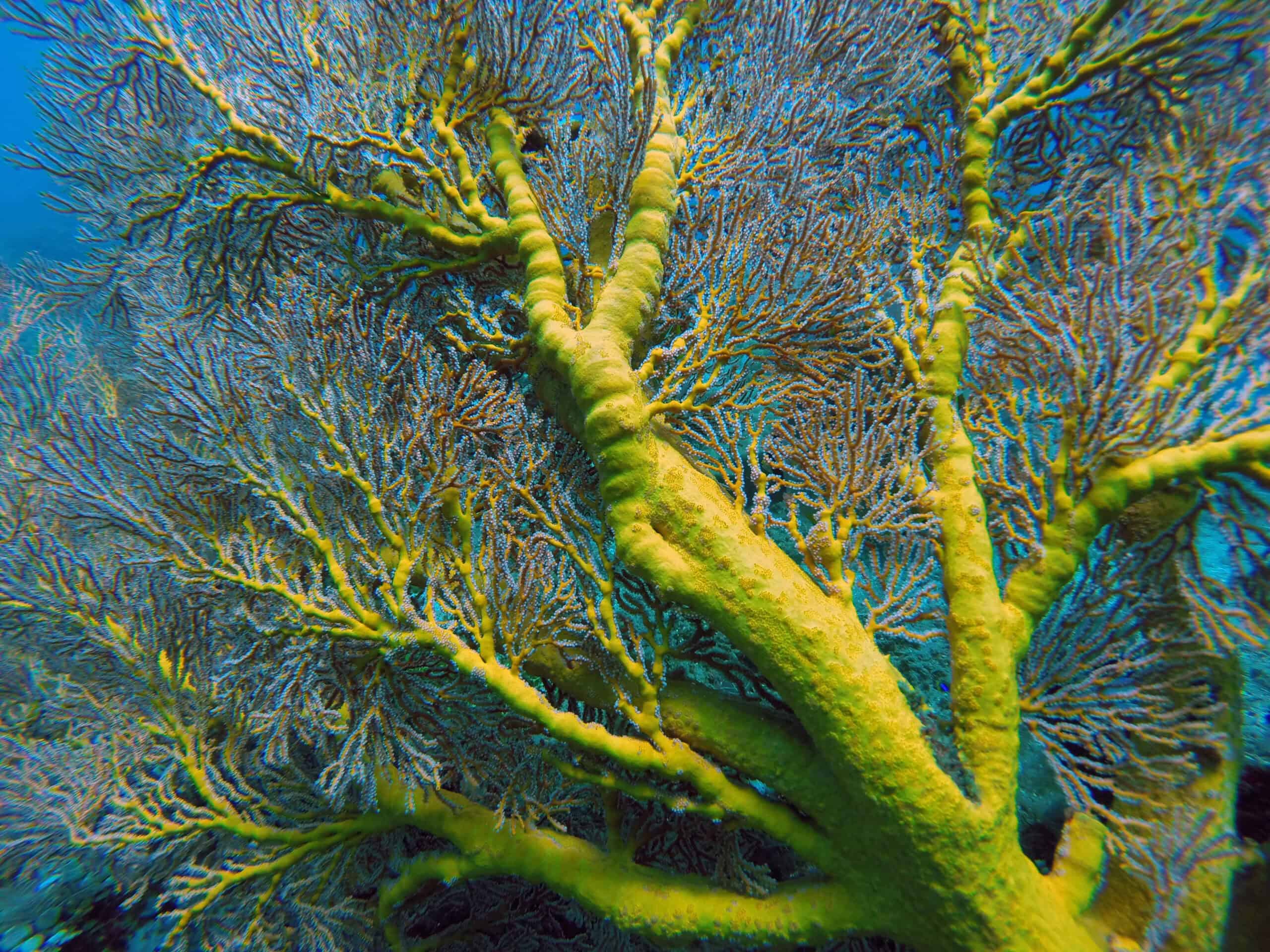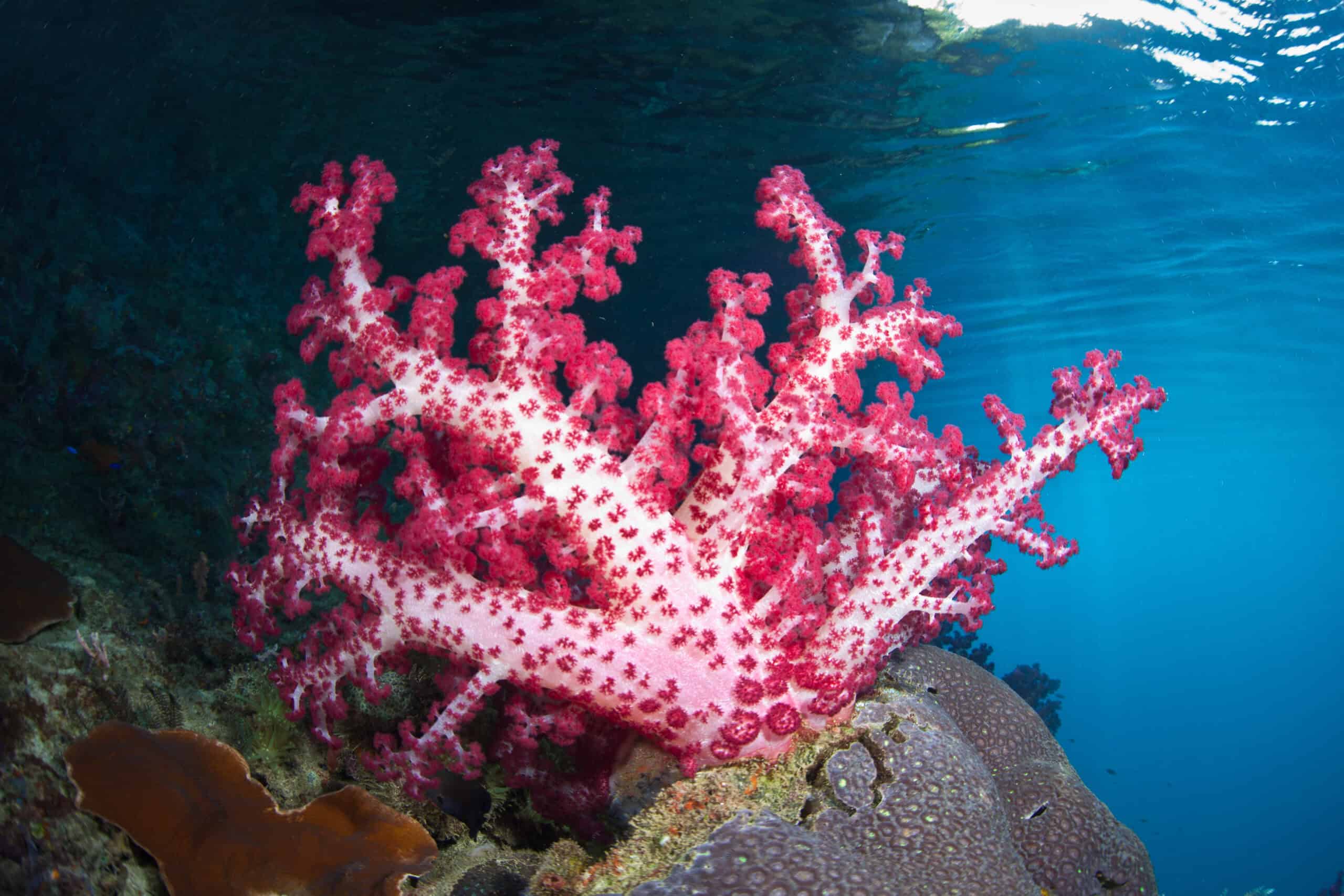The deep seas are home to some of the world’s most intriguing and rare corals. These corals not only add vibrant colors to the ocean depths but also play crucial roles in marine ecosystems. Below, we explore some of the rarest corals found in the deep seas, highlighting their unique characteristics and significance.
Black Coral

Black Coral, also known as Antipatharia, features dark skeletons that give it its name. It can be found in deep-sea environments across the globe. This coral is often used in jewelry due to its unique color and luster. These corals grow slowly and live for hundreds of years, making them quite rare. They provide habitat for various marine life, contributing to the biodiversity of deep-sea ecosystems. Black Corals also play a role in traditional medicine in some cultures, believed to have protective properties.
Bubblegum Coral

Bubblegum Coral is named for its bright pink or red color. This coral can be found in deep-sea regions, often attached to rocky substrates. It forms large, bushy colonies that can reach up to several meters in height. Bubblegum Coral is a significant part of the deep-sea ecosystem, offering shelter to numerous marine species. It is also used in scientific research to understand deep-sea ecology and environmental changes.
Bamboo Coral

Bamboo Coral, part of the Isididae family, has a distinctive segmented appearance that resembles bamboo. This coral is typically found in deep-sea environments worldwide. The coral’s segments are made of calcium carbonate, interspersed with protein joints. Bamboo Corals are known for their longevity and can live for over a century, making them a rare and valuable component of marine biodiversity. They also play a role in carbon cycling and serve as indicators of ocean health.
Gold Coral

Gold Coral is renowned for its striking golden hue. This coral is found in deep-sea habitats and is often used in jewelry making. Gold Coral can live for thousands of years, making it one of the oldest living marine organisms. Its rarity and unique appearance make it a fascinating subject of study and conservation. The slow growth rate of Gold Coral highlights the importance of protecting it from overharvesting and environmental impacts.
Lophelia Coral

Lophelia Coral, scientifically known as Lophelia pertusa, is a white or pale pink coral found in deep-sea environments. It often forms large, complex reef structures. These reefs provide critical habitat for many deep-sea species. Lophelia Coral is slow-growing and sensitive to environmental changes, contributing to its rarity. These coral reefs also play a role in protecting coastlines by reducing wave energy and preventing erosion.
Red Coral

Red Coral, scientifically called Corallium rubrum, is prized for its vibrant red color. Found in deep-sea habitats, this coral is often used in jewelry and decorative items. Red Coral grows very slowly and can live for hundreds of years. Its beauty and rarity make it highly valued, but also a subject of conservation efforts due to overharvesting concerns. It plays a significant role in Mediterranean marine ecosystems and is a crucial part of underwater cultural heritage.
Wire Coral

Wire Coral, belonging to the Cirrhipathes genus, features long, whip-like structures. They are often black or dark brown in color. This coral can be found in various deep-sea environments around the world. Wire Coral provides habitat for small marine organisms. Its unique, wiry appearance makes it stand out among other corals. These corals are also important for studying deep-sea biodiversity and ecosystem dynamics.
Precious Red Coral (Corallium japonicum)

Precious Red Coral, scientifically known as Corallium japonicum, is renowned for its deep red color. Found primarily in the waters around Japan, this coral is highly valued in the jewelry industry. Its slow growth rate and limited distribution make it rare. Precious Red Coral is also a subject of conservation efforts due to overharvesting. This coral plays a significant role in traditional Japanese culture and art.
Soft Coral

Soft Coral, part of the Alcyonacea order, lacks the hard calcium carbonate skeletons found in other corals. They come in various colors, including pink, purple, and yellow. These corals are widespread in deep-sea habitats. Soft Corals provide shelter and food for many marine species. Their flexible structures allow them to thrive in dynamic environments. Soft Corals are crucial for maintaining the health and diversity of deep-sea ecosystems.
Chrysogorgia Coral

Chrysogorgia Coral features intricate, branching structures. They are often golden or yellow in color. This coral can be found in deep-sea regions around the world. Chrysogorgia Corals are important for studying deep-sea ecology. Their complex branches provide habitat for various marine organisms. The rarity of these corals highlights the need for conservation efforts in deep-sea environments.
Primnoid Coral

Primnoid Coral, belonging to the Primnoidae family, exhibits branching, tree-like structures. They come in shades of red, pink, and white. These corals are commonly found in cold, deep-sea waters. Primnoid Corals play a vital role in deep-sea ecosystems. They provide habitat and food for a variety of marine species. Their unique structures also make them valuable for scientific research on deep-sea biodiversity.
Stylaster Coral

Stylaster Coral, part of the Stylasteridae family, is known for its delicate, lace-like appearance. They come in various colors, including red, pink, and white. These corals are found in deep-sea environments worldwide. Stylaster Corals are significant for their role in marine ecosystems. They provide habitat for small marine organisms and contribute to reef structures. Their beauty and rarity make them subjects of both scientific study and conservation efforts.
Fan Coral

Fan Coral features wide, fan-shaped structures. They are often bright red or orange in color. This coral can be found in deep-sea regions. Fan Corals provide shelter and habitat for many marine species. Their large, flat structures maximize surface area for feeding. These corals are essential for maintaining deep-sea biodiversity and are also used in decorative arts.
Dendronephthya Coral

Dendronephthya Coral displays vibrant, tree-like structures. They come in a range of colors, including red, pink, and yellow. These corals are found in various deep-sea habitats. Dendronephthya Corals are crucial for the health of deep-sea ecosystems. They provide habitat and food for numerous marine organisms. The striking appearance and ecological importance of these corals make them a focus of conservation efforts.
This article originally appeared on Rarest.org.
More from Rarest.org
The 10 Rarest Military Memorabilia and Their Worth

Collecting military memorabilia offers a glimpse into history’s pivotal moments. These rare items not only hold immense historical significance but also command high prices at auctions. Read More.
1968 Roosevelt Dime Value Guide

Since it first entered circulation in 1946, the Roosevelt Dime has served as a reminder of President Franklin D. Roosevelt’s support for the March of Dimes and his initiatives to end polio. Read More.
1970 Kennedy Half Dollar Value Guide

The only Kennedy half designed for circulation that contained any silver at all was the 1970 Kennedy Half Dollar, the last of the regular-strike silver-clad half dollars. Read More.
